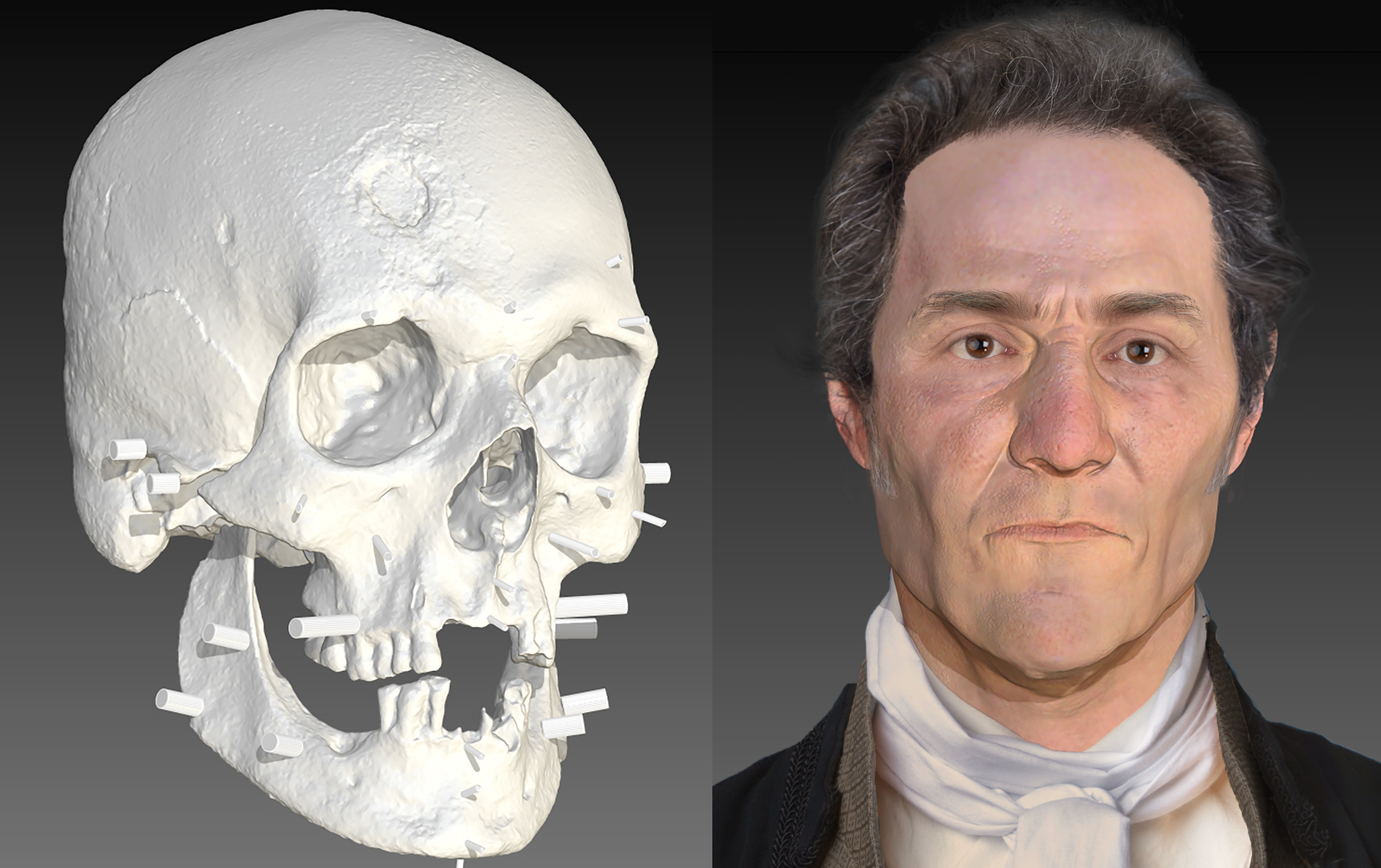The face of a man suspected of being a vampire in the 19th century has been digitally reconstructed. Furthermore, the work may have pinned down the identity of this mysterious man using DNA submitted to genealogy websites.
Parabon NanoLabs and the Armed Forces DNA Identification Laboratory worked together to produce the reconstruction, which was revealed at the International Symposium on Human Identification conference in Washington DC this week, according to an announcement.
The reconstruction is based on the skeleton of a middle-aged man discovered in 1990 in the town of Griswold, Connecticut. The lid of the 19th-century coffin had brass tacks that spelled “JB55”, but his full name is not known as it appears he was buried in an unnamed grave.
A study of the body in 2019 argued that the man was suspected of being a vampire. His body appeared to have been dug up and reburied because his limbs had been placed atop his chest in an X-shaped skull-and-crossbones configuration, a ritual usually performed for those accused of being a vampire.
3D scan of JB55’s skull with tissue depth markers helped guide the facial reconstruction (left) and the forensic facial reconstruction (right). Image credit: Parabon Nanolabs
On top of this, there’s evidence that the man may have died from a chronic pulmonary infection, perhaps tuberculosis, as evidenced by the lesions on his ribs.
Vampire-like figures appear in cultures around the world, from ancient China to pre-Columbian Americas, which has led some researchers to believe the mythical phenomenon may be based on a real disease.
It’s unlikely that a single disease provides a one-size-fits-all origin for all vampire myths, although one likely candidate is tuberculosis. For example, a person severely sick with this disease may have appeared pale with gaunt cheeks and receding gums that made the teeth longer, like fangs.
Using genetic material from the body and a 3D scan of the skull, the researchers pieced together how this man might have looked. They estimated that around 10 times more data would be needed to accurately gauge his appearance, but the evidence they do have provided some important clues.
DNA analysis suggested that JB55 had very fair or fair skin (92.2 percent confidence), brown or hazel eyes (99.8 percent confidence), dark hair (97.7 percent confidence), and some freckles (50.0 percent confidence).
Even if you managed to get your hands on high-quality samples, genetics is far too complex to analyze DNA and predict what a person’s face looks like, but the project employed the help of Thom Shaw, a forensic artist at Parabon, to gauge his face shape based on the 3D scan of the skull.
For their final trick, the researchers used genetic genealogy in an attempt to reveal the unknown man’s identity. The 2019 study also compared the DNA of JB55 to profiles on publicly accessible family tree websites, revealing two close matches with the surname “Barber.” This is the kind of research that’s recently solved a bunch of unsolved murder cases, including catching the Golden State Killer in 2018 and identifying a victim of serial killer John Wayne Gacy in 2021 – around 45 years after his murder.
A further search of historical records led the team to a death notice mentioning a man named John Barber who was buried in the Griswold cemetry. This name also neatly matched the initials “JB” on the coffin.
This latest work also found the JB55 has ancestors with the surname Barber living in New England in the 18th and 19th centuries, supporting the original hypothesis that he was perhaps John Barber.
Much of his story and tragic demise, however, does remain lost to history.
Source Link: Face Of A 19th-Century Man Suspected Of Being A Vampire Reconstructed
